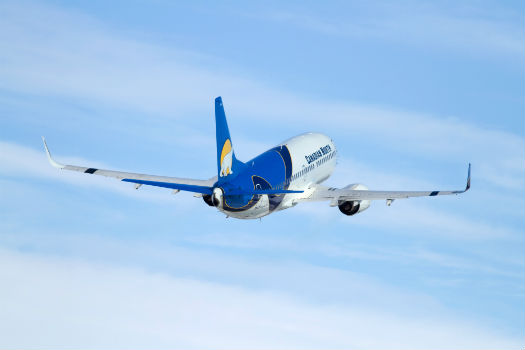by Brent Jang | May 6, 2015
Estimated reading time 5 minutes, 59 seconds.
Representatives of Canadian North and First Air are in favour of developing a closer relationship between the two carriers, to fend off competition from Air Canada and WestJet. Michael Durning Photo
Canadian North and First Air remain interested in finding ways to become more efficient through co-operation, despite ending formal merger talks last year.
The two carriers specialize in flights within the Northwest Territories and Nunavut, as well as offering some flights to the south to destinations such as Edmonton and Ottawa. Back in April 2014, the two rival airlines announced they would be entering merger discussions.
“A merger would improve the sustainability of these critical Inuit birthright enterprises and would also create better air services and new economic development opportunities across the North,” Canadian North and First Air said at the time.
But, six months later, the two aboriginal-owned carriers issued a terse, joint statement to say that they had broken off merger talks. “No such further discussions are envisaged,” they said in their release last October.
Canadian North is owned by NorTerra Inc., a holding company which in turn is controlled by Inuvialuit Development Corp. of Inuvik, N.W.T. First Air is owned by Makivik Corp., the administrator of land claim settlements of Northern Quebec’s Inuit.
Canadian North president Steve Hankirk is optimistic about co-operation in areas such as sharing de-icing units, ground-handling services and cargo-loading equipment. Another possibility is putting more passengers on each other’s planes in cases of cancellations due to mechanical problems at one carrier.
“In the North, there is a lot of what I call wing-to-wing flying, meaning that First Air’s route map basically overlaps with ours by 90 per cent,” Hankirk said in an interview from the company’s head office in Calgary.
Longer term, it is possible for merger discussions to resume, say industry observers, who point out that First Air is strong in cargo shipments while Canadian North has a couple of key long-term contracts for charter flying in Alberta’s oil sands.
Still, low oil prices have reduced demand for charters, prompting Canadian North to recently reduce its work force by 10 per cent, to roughly 900 people.
“There is an overcapacity in the North, but the shareholders just couldn’t agree on the financial terms of the merger, and that is what terminated the talks,” said Hankirk. Ultimately, the goal of greater co-operation is still achievable, he emphasized.
First Air president Brock Friesen said it’s not a matter of if, but when, the two carriers form tighter bonds.
“There is only one way forward in the North, and there has to be consolidation,” he said from his office in Kanata, Ont. “I have to believe that at some point in time, a way will be found for consolidation. Whether it starts with small commercial co-operation and ends up something bigger, I don’t know. But, I want it to happen.”
Fleet renewal is a regular part of long-term planning. Canadian North’s fleet recently consisted of 19 planes: 10 Boeing 737-300s, five Boeing 737- 200s and four Dash 8 turboprops. First Air recently had 20 aircraft, including three Boeing 737-400s, six Boeing 737-200s and 11 ATR turboprops.
First Air transferred a leased Boeing 767 to Cargojet last year, and sold two L382G Hercules aircraft early in 2015.
Friesen said the airline will be updating its fleet in a process that will start later in 2015 and last through late 2016 or early 2017. The Bombardier Q400 and the ATR42-500 turboprops are being examined as possible replacements for the older ATRs in the fleet.
Friesen is considering ordering more Boeing 737- 400s as part of the initiative to modernize the fleet and reduce maintenance expenses by having newer and fewer aircraft types.
Whitehorse-based Air North didn’t take part in last year’s merger talks since its route net- work focuses on flights between Yukon, B.C. and Alberta. Air North recently had 11 aircraft in its fleet – four Boeing 737-500s, one Boeing 737-400, one Boeing 737-200 and five Hawker Siddeley 748 turboprops. One of the Boeing 737-500s is not in service, but will be this fall. The turboprops are slated to be replaced by ATRs.
Air North president Joseph Sparling said northern carriers face challenges in serving a small population base that is spread out over a wide area, and airports need improvements. “Runways are too short; runways need to be paved,” said Sparling. “We need to strengthen the transportation grid in the North.”
Stephen Nourse, executive director of the Northern Air Transport Association, added that Canadian North, First Air and Air North aren’t complacent and they recognize competitive forces. Air Canada and WestJet haven’t been shy about doing battle against Air North on the Vancouver-Whitehorse route. Air Canada and WestJet also compete against Canadian North and First Air for Edmonton-Yellowknife service.

